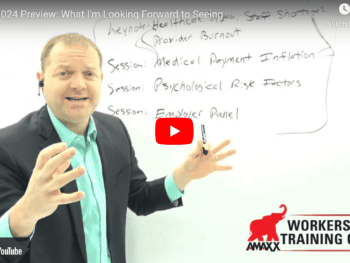Looking for zero tolerance on the job when it comes to bullying, a recent work-stress survey, conducted by UNISON City of Glasgow (Scotland) branch using the HSE Stress Management Standards, discovered some 23 percent of respondents were always, often or on occasion bullied.
The survey came to light once concerns were raised by UNISON members regarding the affect spending reductions were having on workloads and workplace stress.
Work-Stress Major Concern Requiring Urgent Action
According to the branch’s health and safety officer, Scott Donohoe, “We had a 96 percent response rate, which was excellent. Unfortunately, a lot of the members’ responses were in the red, meaning that work-stress was a major concern and that urgent action was required.
“After presenting our findings to the employer, we agreed that a couple of focus groups, consisting of employees, members and safety reps, would be setup to discuss the results of the survey and identify stressors.”
Donohoe added that “The work-stress campaign has been successful in recruiting new members and activists. Our next step is to review the risk assessment to ensure that the ‘prevent and control’ measures have been implemented and are still relevant, and widen the work-stress campaign to include other employees.”
Guide Recommended for All Employers Dealing with Stress
The Health and Safety Executive (HSE) guide “Managing the Causes of Work Related Stress: a Step by Step Approach Using the Management Standards” is recommended for use by all employers when looking at how to deal with the problem of stress. The guide places risk assessment at the heart of any plan to lower the risk of work-related stress.
However, the HSE makes clear that prior to a risk assessment being undertaken, the employer is best served if they:
- Talk to their staff about work-related stress and explain what they want to identify;
- Set up a group to help (which includes trade union safety/employee representatives, the unit health and safety officer, one or more supervisors or line managers, an HR representative and, where possible, someone from the occupational health service);
- Explain that the first step is to undertake a risk assessment;
- Ask the group to assist in the assessment; and
- Agree a date when the key findings of the risk assessment will be available.
In assessing the risks in your workplace, its is recommended that your employer review the five steps to risk assessment:
1 Identify the hazards;
2 Decide who might be harmed and how;
3 Evaluate the risks and decide on precaution;
4 Record your findings and implement them; and
5 Review your assessment and update if necessary.
Author Michael B. Stack, CPA, Director of Operations, Amaxx Risk Solutions, Inc. is an expert in employer communication systems and part of the Amaxx team helping companies reduce their workers compensation costs by 20% to 50%. He is a writer, speaker, and website publisher. www.reduceyourworkerscomp.com. Contact: mstack@reduceyourworkerscomp.com.
©2013 Amaxx Risk Solutions, Inc. All rights reserved under International Copyright Law.












